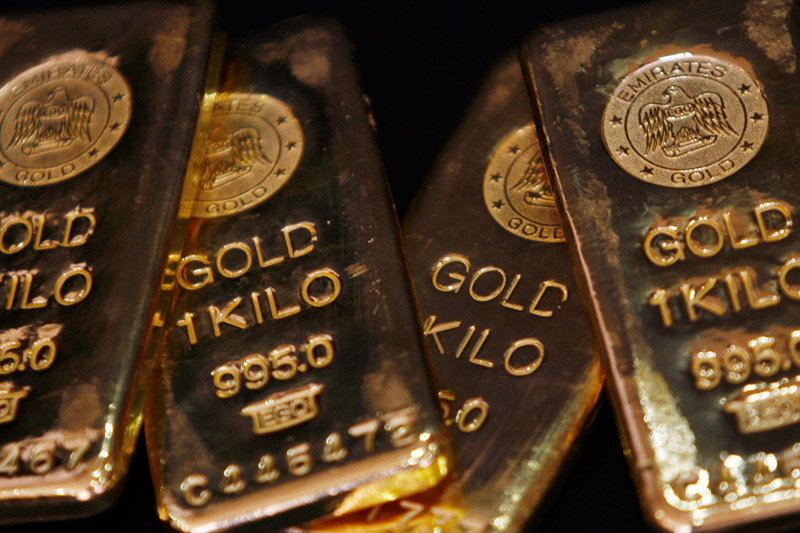Investing.com - Gold plunged to a five-year low on Friday, as upbeat U.S. inflation and housing data boosted expectations for an interest rate hike later this year.
Gold futures for August delivery on the Comex division of the New York Mercantile Exchange hit an intraday low of $1,129.60 a troy ounce, a level not seen since April 2010, before closing at $1,131.90, down $12.00, or 1.05%.
For the week, prices of the precious metal slumped $27.20, or 2.24%, the fourth straight weekly loss.
Futures were likely to find support at $1,123.70, the low from April 29, 2010, and resistance at $1,148.20, the high from July 16.
Also on the Comex, silver futures for September delivery dropped 15.0 cents, or 1%, on Friday to settle at $14.83 a troy ounce. Silver prices lost 72.1 cents, or 4.18%, on the week, the fourth consecutive weekly decline.
Data on Friday showed that U.S. consumer prices rose 0.3% in June, the fifth consecutive monthly increase, while core prices, which exclude food and energy, increased 0.2% last month, adding to signs of firming inflation.
A separate report showed that U.S. housing starts surged 9.8% to 1.174 million units in June. Analysts had expected housing starts to increase by 6.2% last month.
Meanwhile, U.S. building permits jumped 7.4% to 1.343 million units in June, the most since July 2007, pointing to a rapidly strengthening housing market.
Federal Reserve Chair Janet Yellen said earlier in the week that the central bank was on track to raise interest rates by the end of the year if the economy continues to grow as expected.
Expectations of higher borrowing rates going forward is considered bearish for gold, as the precious metal struggles to compete with yield-bearing assets when rates are on the rise.
The U.S. dollar index, which measures the greenback’s strength against a trade-weighted basket of six major currencies, inched up 0.3% to end at 98.09 late Friday, the strongest level since April 23.
For the week, the index rose 1.9%, the biggest weekly gain since May, amid growing indications that a rate hike is coming in the U.S. later this year.
A stronger U.S. dollar usually weighs on gold, as it dampens the metal's appeal as an alternative asset and makes dollar-priced commodities more expensive for holders of other currencies.
Meanwhile, euro zone ministers agreed on Thursday to give Greece a €7 billion bridging loan from a European Union-wide fund to keep its finances afloat until a bailout is approved.
The news came after the ECB increased its emergency lending to Greek banks by €900 million and added that it is operating under the assumption that Greece will remain in the euro zone.
Elsewhere in metals trading, copper for September delivery shed 2.7 cents, or 1.07%, on Friday to settle at $2.496 a pound, the lowest since July 8.
For the week, copper prices retreated 3.4 cents, or 1.65%, amid concerns over the health of China's economy. The Asian nation is the world’s largest copper consumer, accounting for almost 40% of world consumption last year.
Also on the Comex, platinum dropped below the $1,000-threshold for the first time since early 2009 on Friday, as concerns over ample supplies and sluggish demand weighed.
In the week ahead, market players will focus on U.S. data on home sales and jobless claims for further indications on the strength of the economy and the timing of an interest rate hike.
Ahead of the coming week, Investing.com has compiled a list of these and other significant events likely to affect the markets. The guide skips Monday and Tuesday as there is no relevant data on these days.
Wednesday, July 22
The U.S. is to release private sector data on existing home sales.
Thursday, July 23
The U.S. is to report on initial jobless claims.
Friday, July 24
China is to publish the preliminary reading of the HSBC manufacturing index.
The euro zone is to release survey data on private sector activity.
The U.S. is to round up the week with reports on manufacturing activity and new home sales.
